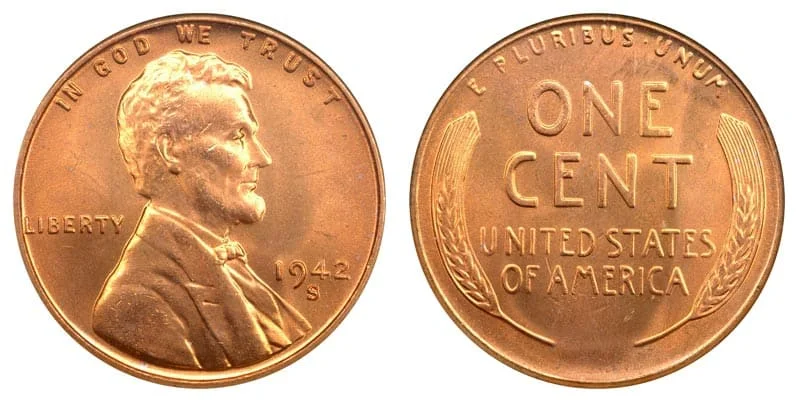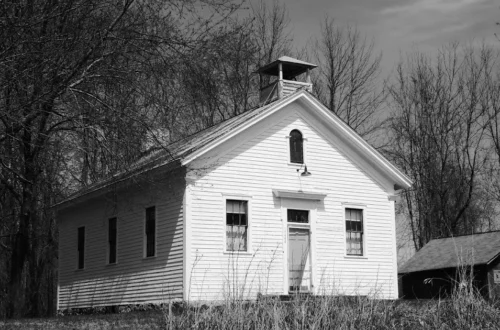Rare Lincoln Wheat Penny: Few small coins stir the imaginations of collectors like the Lincoln Wheat Penny. Minted between 1909 and 1958, these pennies carry the dual wheat-stalk reverse and Lincoln’s portrait on the obverse. While most circulate for only face value, a handful of these coins are exceedingly rare, commanding prices in the tens or even hundreds of thousands of dollars. In this article, you’ll learn:
-
The history behind the Wheat Penny
-
What makes a Lincoln Wheat Penny rare or valuable
-
The most famous rare varieties (e.g. 1943 copper, 1955 double die)
-
How to examine and authenticate a rare penny
-
Approximate valuation ranges
-
Tips for collectors and sellers
If you’ve got old pennies, one might just be a numismatic treasure.
History & Basics of the Lincoln Wheat Penny
When the United States Mint introduced the Wheat Penny in 1909, it was groundbreaking: for the first time, a U.S. one-cent coin featured a president’s portrait—Abraham Lincoln—on its obverse side. The reverse design incorporated two wheat stalks, hence the nickname “Wheat Penny.”
The design was by Victor David Brenner (his initials “V.D.B.” appeared in 1909, then removed). The series continued until 1958, when the Mint replaced the reverse with the Lincoln Memorial design in 1959.
During their production run, millions of Wheat Pennies circulated in everyday American life, often getting worn, lost, or melted down. Because so many of them exist, only certain dates, mint locations, error coins, or high-grade survivors rise into the “rare & valuable” category.
Some basic facts to keep in mind:
-
Composition: mostly 95% copper / 5% tin & zinc (except wartime exceptions)
-
Weight: ~3.11 grams
-
Diameter: 19.05 mm
-
Mint marks: D (Denver), S (San Francisco), or none (Philadelphia)
-
Condition matters a lot—“Uncirculated” or “Mint State” examples are far more valuable
Understanding these fundamentals helps separate common pennies from potential rarities.
What Makes a Lincoln Wheat Penny Rare & Valuable
Not every Wheat Penny is rare. In fact, most have only nominal value (a few cents to a few dollars). But certain features can elevate a wheat penny’s value exponentially:
Key factors that drive rarity
-
Low mintage / small production
Coins from years or mints that produced few examples (or where fewer survived) tend to be more valuable. -
Error / variety coins
Mistakes like wrong metal, doubling, misstrikes, missing mint marks, or die cracks can make a coin extremely rare. -
Key dates / “key issues”
Some years are inherently more prized, such as 1909-S VDB, 1914-D, and late issues like 1958 double die varieties. -
Exceptional condition / grading
A rare coin in poor condition may not command much. But a rare coin in Mint State (MS-65, MS-66, MS-67, etc.) or proof condition can fetch vastly higher prices -
Historical & error significance
Coins with historical importance or dramatic minting errors (like wrong planchets during WWII) draw more collector interest.
If your penny checks one or more of these boxes, it’s worth having it professionally appraised.
Famous Rare Lincoln Wheat Penny Varieties
Here are some of the most sought-after and legendary Wheat Penny types:
1943 Copper (Bronze) Wheat Penny
During WWII, pennies were meant to be struck on zinc-coated steel to conserve copper. But a few copper planchets remained and were accidentally struck. These “copper 1943” pennies are among the rarest of all.
One example from the San Francisco mint sold for $504,000 in 2020.
Another Denver variant reportedly sold for over $840,000 in recent years.
Because steel pennies are magnetic, copper 1943s are nonmagnetic—a common test.
Only a handful (estimated 30–40) are believed to exist
1944 Steel Wheat Penny
Similarly, in 1944, there are a few anomalies where steel planchets were used in error when copper was expected. These “wrong metal” coins are extremely rare
1909-S VDB
One of the first-year issues (1909) with the controversial Brenner initials “VDB” on the reverse was only produced briefly and then removed. The San Francisco versions (1909-S VDB) are especially prized.
1914-D
With relatively low mintage in Denver (1,193,000), this key date is one of the most sought non-error Wheat Pennies.
Auction records show pieces in high grade bringing $158,625 or more.
1958 Double Die Obverse (DDO)
Because 1958 was the final year of the Wheat Penny, an error double-die variety (doubling in the date or letters) becomes particularly special. Some examples have sold for over $336,000.
Other Varieties & Mintmark Errors
-
1922 “No D” (Denver); the “D” mintmark missing due to polishing.
-
1931-S (low mintage at S mint) is a known collectible.
-
1955 Double Die (not Wheat but often associated in Lincoln cent lore) is very famous.
These coins tell a fascinating story of minting errors, historical shifts, and scarcity.
How to Examine & Authenticate Rare Wheat Pennies
If you think you’ve found a rare Lincoln Wheat Penny, here’s what to do:
1. Visual inspection
-
Use a magnifier or loupe (5×–10×) to check for doubling, doubling of letters, fine die cracks, or unusual shapes.
-
Observe the mintmark (S, D, none) under magnification and check for anomalies or overlaps.
-
On 1943, check if the coin is nonmagnetic (copper) or magnetic (steel).
-
For 1922 “No D,” see if there’s evidence of a mintmark that was polished away.
2. Weight & dimensions
-
Use an accurate scale (in grams) and compare to expected weight (3.11 g for standard copper pennies).
-
Measure diameter and thickness; discrepancies may indicate a wrong planchet.
3. Professional grading / third-party authentication
If preliminary signs are promising, send it to reputable third-party grading services (e.g. PCGS, NGC). They evaluate condition, authenticity, and grade the coin.
4. Certification & provenance
Coins with clear provenance (auction history, documentation) tend to command higher trust and value. Mistakes or misattributions happen frequently in the rare coin world.
5. Beware of counterfeits
Because some rare pennies fetch huge sums, counterfeits exist. Be wary of reproduction coins, altered mintmarks, “cleaned” coins, or pieces that are too good to verify. Always get expert advice.
Estimated Values & Market Notes
While prices shift with the market, here’s a rough guideline for what rare Lincoln Wheat Pennies may be worth (in good to excellent condition):
-
Common Wheat Pennies (worn condition): $0.05 to $0.50
-
Well-preserved non-key dates: $5 to $50
-
Key date / moderately rare pieces: $100 to $10,000+
-
Famous error coins: six-figure to million-dollar levels
Examples:
-
A 1943 copper Wheat Penny (rare error) sold for $504,000.
-
The 1958 Double Die Obverse has fetched $336,000 at auction.
-
Extremely rare 1943-D bronze examples are sometimes cited as reaching values of $840,000 or more.
-
A 1914-D coin in top condition has been auctioned for $158,625.
-
1909-S VDB pieces, depending on condition and color (Red vs Brown), can command tens to hundreds of thousands.
Note: sensational claims like a $120 million Lincoln Wheat Penny remain unverified and likely hype.
Because condition and grade matter enormously, two “rare” pennies may be valued very differently.
Tips for Collectors & Sellers
If you’re a collector or have a potential rare Lincoln Wheat Penny, consider these best practices:
-
Handle carefully: Oils from fingers degrade surfaces—use gloves or hold the edges.
-
Store properly: Use inert holders, coin flips, or airtight containers; avoid PVC.
-
Document provenance: Keep records of purchases, photos, certificates.
-
Get multiple opinions: Use multiple grading services, consult experienced numismatists.
-
Stay informed: Market values shift—track auction results, coin news, and grading trends.
-
Show skepticism: Don’t believe outrageous values until fully authenticated.
-
Consider insurance: For high-value coins, ensure proper insurance and secure storage.
These practices protect your investment and help maintain coin integrity.
Conclusion
The Lincoln Wheat Penny remains one of America’s most beloved and intriguing coins. While the vast majority are worthless beyond face value, a small subset—including 1943 copper errors, 1914-D, 1958 DDO, 1909-S VDB, and other error or low-mintage varieties—are highly prized by collectors and can fetch monumental prices.
If you find an old wheat penny in a jar or among your change, inspect it closely, test it (e.g. magnet), and consider getting it authenticated. You might just be holding a hidden gem that tells a story—and carries real value.





